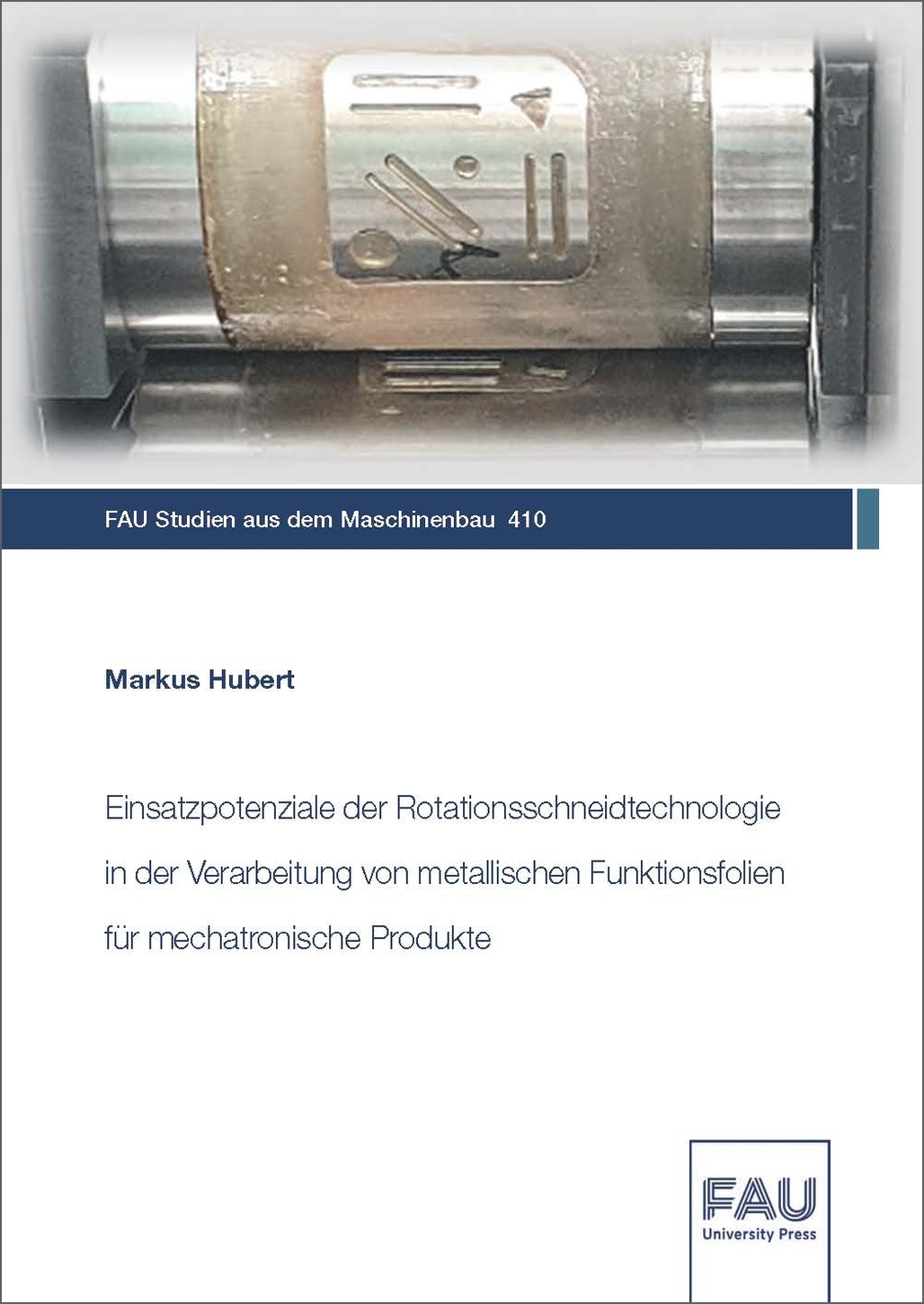Description
Rotary cutting is a technology that is not very widespread overall and has established itself primarily in the packaging and hygiene industry as a process for processing numerous soft and non-metallic materials. The process has become widespread in metal processing in combination with profiling processes and has also established itself in this industry for simple profile applications. As a continuous process, rotary cutting thus proves its potential in the mass processing of thin materials, including, hypothetically, metallic functional foils used in mechatronic applications. Important representatives of this category are electrical steel for soft magnetic cores, copper foils for circuit carriers, alloyed copper strips for leadframes and solder strip for preforms.
In this thesis, the utilization potential of rotary cutting technology for the processing of these metallic functional foils is analyzed and possible solutions are identified.
First, the technological process characteristics for the design of the process structure, the kinematics of the process, as well as the statics and dynamics of rotary cutting are determined and aligned with the conditions for the rotary cutting of thin metal foils. Subsequently, rotary wedge-action cutting, rotary shearing and rotary elastomer-cutting are identified as suitable process alternatives for the processing of thin metal foils for mechatronic applications, adapted to the high requirements of mechatronic applications and examined in detail for their suitability for the processing of selected representatives for functional foils.
Concluding, the three rotary cutting processes are categorized with respect to various criteria to enable a selection for the specific application. Finally, two exemplary applications provide an outlook on the enormous technical and process potential in the industrial processing of metal functional foils for mechatronic products. The first application considered is the efficient rotary processing of electrical steel strip into magnetic cores. The second application deals with the rotary processing of printed circuit boards for LED light sources.


Reviews
There are no reviews yet.